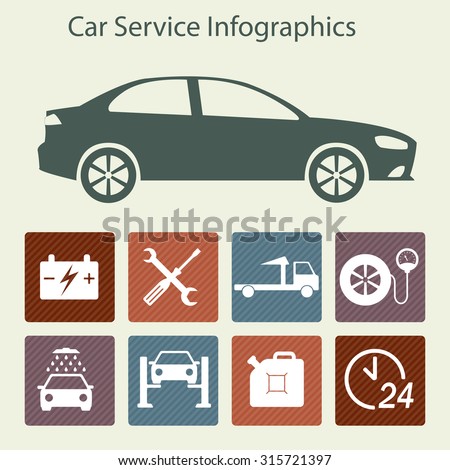Decoding Your Automobile'S Caution Indicators: What They Really Symbolize
Decoding Your Automobile'S Caution Indicators: What They Really Symbolize
Blog Article
Web Content Writer-Vinson Forbes
When you lag the wheel, those glowing warning lights on your dashboard can be a little bit puzzling. Do you know what they're trying to inform you concerning your vehicle's health? Understanding the significance of these lights is crucial for your security and the durability of your car. So, the following time one of those lights appears, wouldn't you want to decode its message properly and take the needed steps to address it?
Common Warning Lighting and Interpretations
Identify typical warning lights in your vehicle and recognize their meanings to ensure safe driving.
One of the most typical caution lights consist of the check engine light, which signals concerns with the engine or emissions system. If this light begins, it's essential to have your vehicle checked without delay.
The oil stress warning light suggests low oil stress, needing immediate focus to avoid engine damage.
A blinking battery light may suggest a faulty billing system, potentially leaving you stranded if not addressed.
The tire stress tracking system (TPMS) light informs you to reduced tire stress, influencing automobile security and fuel performance. Neglecting this might lead to dangerous driving problems.
The abdominal light shows an issue with the anti-lock braking system, compromising your capability to stop quickly in emergency situations.
Lastly, the coolant temperature warning light warns of engine overheating, which can lead to severe damages if not resolved quickly.
Comprehending these typical warning lights will certainly assist you attend to concerns immediately and keep safe driving problems.
Relevance of Prompt Attention
Understanding the common warning lights in your automobile is only the very first step; the relevance of without delay attending to these cautions can not be stressed sufficient to ensure your safety when traveling.
When a warning light illuminates on your dashboard, it's your cars and truck's means of communicating a possible concern that requires interest. Ignoring these cautions can lead to more extreme problems later on, endangering your safety and security and potentially costing you much more in repairs.
website to advising lights can prevent malfunctions and crashes. For instance, a flashing check engine light might show a misfire that, if left unattended, could cause damages to the catalytic converter. Addressing this quickly can save you from a costly repair work.
Similarly, a brake system warning light may indicate low brake fluid or used brake pads, essential elements for your safety and security when driving.
DIY Troubleshooting Tips
If you see a caution light on your control panel, there are a few DIY troubleshooting suggestions you can try prior to looking for expert aid.
The first step is to consult your car's guidebook to understand what the specific warning light indicates. Sometimes https://brakes-plus84948.answerblogs.com/30466420/required-equipment-for-every-single-car-repair-organization-to-operate-properly can be as easy as a loosened gas cap triggering the check engine light. Tightening up the gas cap may resolve the trouble.
Another usual problem is a low battery, which can trigger various cautioning lights. Checking the battery connections for rust and ensuring they're safe and secure could fix the trouble.
If a caution light continues, you can attempt resetting it by disconnecting the cars and truck's battery for a few mins and after that reconnecting it. In car valeting near me , examining your vehicle's liquid degrees, such as oil, coolant, and brake fluid, can help troubleshoot cautioning lights associated with these systems.
Final thought
In conclusion, comprehending your cars and truck's caution lights is crucial for maintaining your automobile running efficiently and securely. By quickly resolving these alerts and recognizing what they indicate, you can avoid costly fixings and possible malfunctions.
Remember to consult your auto's manual for particular information on each warning light and take action accordingly to make certain a trouble-free driving experience.
Stay notified, remain safe when driving!
